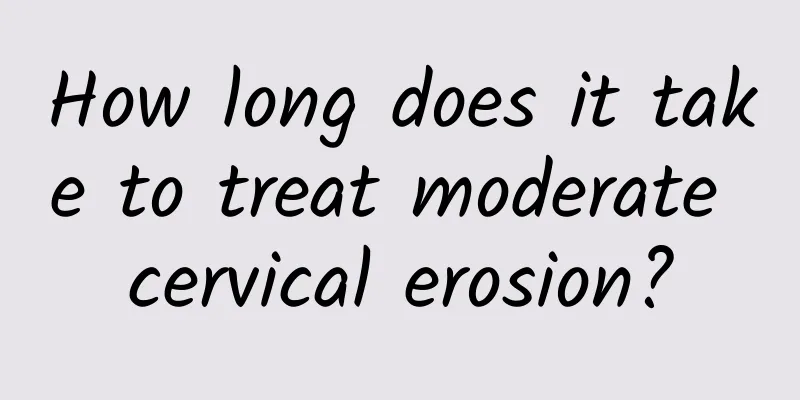How long does it take to treat moderate cervical erosion?

|
Moderate cervical erosion usually needs to be treated according to the specific situation, and the general treatment period is 1-3 months. Treatment methods include medication, physical therapy and lifestyle adjustments, and the specific time varies from person to person. 1. Drug treatment is a common method for moderate cervical erosion. Commonly used drugs include antibiotics, anti-inflammatory drugs and local antibacterial drugs. Antibiotics such as azithromycin and doxycycline can effectively control infection; anti-inflammatory drugs such as ibuprofen and acetaminophen can help relieve inflammation; local antibacterial drugs such as metronidazole gel and clindamycin ointment can directly act on the lesion. Drug treatment usually needs to last for 1-2 months, and the specific time is adjusted according to the condition and doctor's advice. 2. Physical therapy is suitable for patients who are not well treated with drugs or whose condition is more serious. Common methods include laser therapy, cryotherapy and electrocautery. Laser therapy removes diseased tissues through high-energy beams, and usually takes effect in 1-2 times; cryotherapy uses low temperatures to freeze diseased cells, and may require multiple treatments; electrocautery burns diseased tissues through electric current, and the effect is more direct. Physical therapy usually takes 1-3 months, and the specific time is determined according to the treatment method and the patient's recovery. 3. Lifestyle adjustment is also important for the recovery of moderate cervical erosion. It is recommended to maintain good personal hygiene habits and avoid using irritating lotions; pay attention to a balanced diet and consume more foods rich in vitamins C and E, such as citrus fruits and nuts; avoid excessive fatigue and maintain a regular work and rest schedule. Lifestyle adjustment requires long-term persistence and helps reduce the risk of recurrence. The treatment time for moderate cervical erosion varies from person to person, and patients should follow regular checkups to ensure the effectiveness of treatment. Through the combined use of medication, physical therapy, and lifestyle adjustments, most patients can achieve significant improvement within 1-3 months. If you feel uncomfortable or have any questions during treatment, you should communicate with your doctor in a timely manner to avoid delaying the condition. |
<<: The main symptoms of hydatidiform mole
>>: What should I do if my child has abdominal lymphadenitis?
Recommend
What are the common symptoms of miscarriage?
Nowadays, social ideas are becoming more and more...
Premonition of ectopic pregnancy, beware of abnormal vaginal bleeding
Basically, ectopic pregnancy is also a kind of pr...
Massage alone is not enough! To solve constipation and fat belly, grapefruit essential oil is more effective
Constipation not only easily accumulates stool, l...
Can ovarian cysts cause infertility? Is there any good way to prevent it?
Can ovarian cysts cause infertility? What are som...
Special prescriptions of traditional Chinese medicine for treating amenorrhea
Traditional Chinese medicine has a long history a...
What should patients with acute adnexitis pay attention to in their daily lives?
What should patients with acute adnexitis pay mor...
What are the classifications of uterine fibroids? Can I still get pregnant after removing uterine fibroids?
Clinically, it is found that many people panic af...
What are the diagnostic methods for female cervical erosion? Female cervical erosion can be diagnosed by 6 methods
Women are unaware of cervical erosion, and many w...
What harm will painless abortion bring to women?
With the development of today's society, abor...
What are the causes of adnexitis?
What are the causes of adnexitis? Female friends ...
What to eat and what not to eat for uterine fibroids? What Chinese medicine is best for eliminating uterine fibroids?
Uterine fibroids, one of the common gynecological...
Are you exercising right? Hollywood star fitness trainer said this
The trend of sports is becoming more and more pop...
Cost of surgical treatment for bacterial vaginosis
Bacterial vaginosis troubles the health of many f...
There is a way to slim down your legs! 4 acupoints to remove thigh fat
I have been strictly controlling my diet, but my ...
Psychological stress is also a cause of dysmenorrhea
Many female compatriots will experience dysmenorr...









